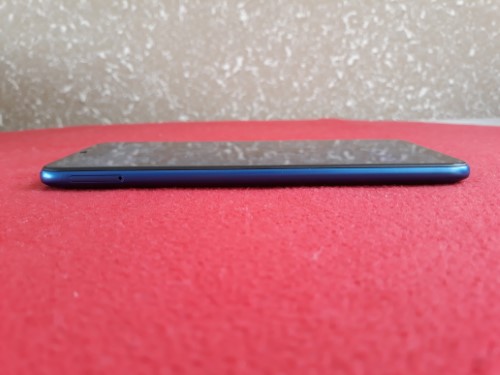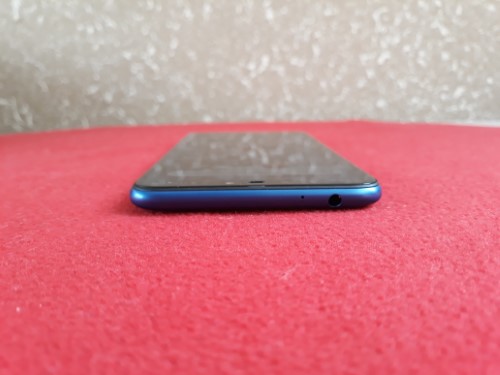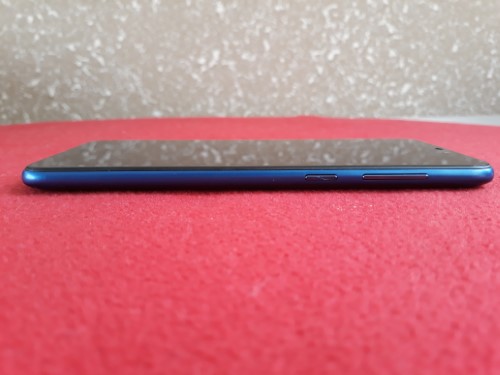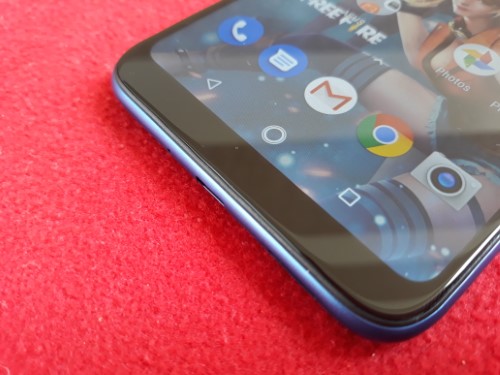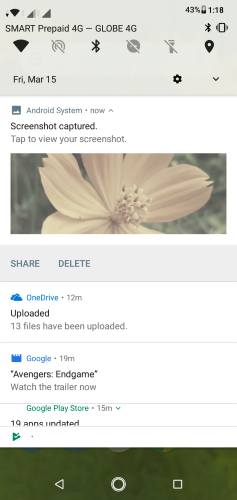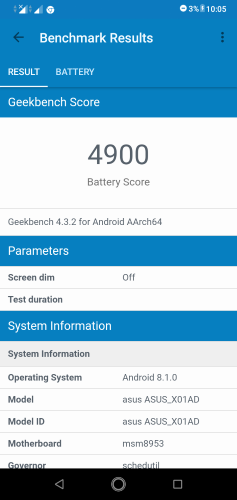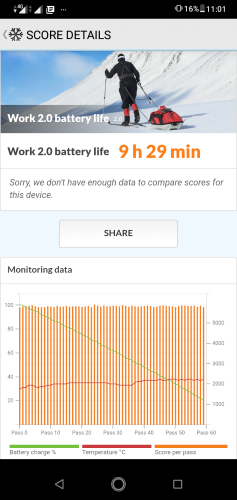
Late last year I had the chance to take a look at ASUS’ new battery king, the ZenFone Max Pro M2. That was certainly a liberating experience for people like me who find it annoying to be tethered to a wall socket in the middle of the day. It’s one of the most requested feature on a phone: a large battery with decent specs.
I wasn’t quite so sure that it still held true when I was recently presented with the step-down, more affordable ZenFone Max M2. With everything cut-back, I was afraid ASUS tipped the balance they’ve achieved with the Pro version.
SPECIFICATIONS (AS TESTED) – ASUS ZENFONE MAX M2 REVIEW
| OS: | Android 8.1 Oreo |
|---|---|
| Processor: | Qualcomm Snapdragon 632 4x Kryo 250 Gold (1.8 GHz) 4x Kryo 250 Silver (1.8 GHz) Adreno 506 |
| Display: | 6.26" 19:9 IPS LCD 720x1520 Gorilla Glass (unknown version) |
| Wireless Connections: | LTE, Bluetooth 4.2, WiFi 802.11 b/g/n, A-GPS, GLONASS |
| Memory: | 3 GB RAM 32 GB Internal Storage expandable up to 512GB MicroSD Card (dedicated slot) |
| Connectors: | Micro USB 2.0, OTG Support |
| Cameras: | Rear: 13 MP f/1.8 + 2 MP depth sensor Front: 8 MP f/2.0 |
| SIM Card Slots: | 2x Nano SIM Cards |
| Battery: | 4,000 mAh |
| SRP: | P8,995 |
DESIGN AND BUILD QUALITY – ASUS ZENFONE MAX M2 REVIEW
The ZenFone Max M2 feels good in the hands. The round metal sides are easy to hold on to and the plastic back does a convincing job of making itself seem metal as well. The sides and the back don’t quite match in terms of color, but other than that, it makes for a good alternative to a unibody design. You can expect the usual caveats with the plastic back, especially with how well the paint will hold up. There’s an included silicone case to alleviate those worries, however.
It’s not specified what Gorilla Glass is used here, if any at all. But after about two weeks of use without a screen protector, there appears to be no scratches on the screen so I’m inclined to say that it must definitely be Gorilla Glass. It’s curved to the sides making the screen smooth and easy to scroll with edge-to-edge.
At the bottom is the usual microUSB port and a loud single bottom-firing speaker. Glad to see they’re not making any dual-grille-but-single-speaker pretensions here. To the left is the dual-SIM tray with dedicated microSD card slot, always useful for those wanting to put as much storage as they need without sacrificing dual network connectivity. On the right rests the volume rocker and the power button. The positioning is just right for my large hands, whereby my thumb lands perfectly on the power button almost all the time and eliminating accidental lowering of the volume.
DISPLAY – ASUS ZENFONE MAX M2 REVIEW
The notched display makes its way to the ZenFone Max M2, not that we consider it a premium feature (there’s no notch settings, by the way). But it certainly is a big display at 6.26 inches. It made me reflect on just how far we’ve come with display sizes on smartphones. Whereas anything upwards of 4.7 inches was considered phablet (hey, remember when we used that term?) territory six years ago, 6-inchers like these are now considered unexceptional even at this price point.
But here’s the catch, at 6.26 inches, the 720×1520 resolution results in just 269 ppi. The good news is that it’s not hugely noticeable in day-to-day use. But the pixel-peepers among us might find jaggy-ness on smaller texts a turn-off.
Otherwise, the IPS display delivers its usual advantages such as great viewing angles and good color reproduction. Color temperature-wise, it’s definitely on the cooler side out of the box, but you can adjust it using the color temperature slider. Sunlight legibility is great thanks to the high brightness and good auto-brightness control.
CAMERA – ASUS ZENFONE MAX M2 REVIEW

The dual-lens setup at the back is a 13 MP f/1.8 and 2 MP depth sensor. While I don’t care much for artificial bokeh effects and portrait mode, it’s edge detection works fairly well.

(Rear camera) Portrait mode – Off 
(Rear camera) Portrait mode – On
The 13 MP shooter itself isn’t too bad although dynamic range tends to overblow bright areas and keeps shadowy parts very dark. On the plus side, HDR mode works really well (save for the APT studio shot where the HDR shot was weirdly overexposed) and I’d keep it on for most cases.

HDR Off 
HDR On 
HDR Off 
HDR On 
HDR Off 
HDR On 
HDR Off 
HDR On
Macro shots turned out quite nicely as well, if a bit out of focus.
Night mode doesn’t really seem to do much other than to wash out colors. Too bad since the Max M2’s camera app is pretty sparse in terms of features as it is. It only has Auto, Pro, HDR, Sports, and Night mode. There are built-in filters as well, but nothing you can’t do on a third party app like Instagram. There’s also the obligatory beauty mode and goes from off and all the way to high.

Night Mode – Off 
Night Mode – On

Beauty Mode – Off 
Beauty Mode – Medium
Beauty Mode – High
For video, the Max M2 is capable of shooting 4K UHD videos, but EIS is only enabled for 1080p videos. You have two choices then: Detailed 4K videos, or stable 1080p ones if you have shaky hands.
PERFORMANCE AND BATTERY LIFE – ASUS ZENFONE MAX M2 REVIEW
The ZenFone Max M2 posted respectable scores in AnTuTu, Geekbench, and PCMark. Lower than its Pro sibling, but nothing alarming.

AnTuTu 
Geekbench 
Geekbench Compute 
PCMark Work 2.0
In everyday use, the ZenFone Max M2 quelled my worries that ASUS has made cuts that would’ve compromised an overall pleasant experience. The performance from the Snapdragon 632 and its Adreno 506 GPU cruised through my usual internet browsing and heavy apps such as Google Maps.
There’s no appreciable hiccups going through the stock UI and launcher. ASUS’ simply stock approach pays dividends here by not bloating the phone with excessive apps and features. Some users might find it the other way and say that its lacking in features though.
For games, the ZenFone Max M2 was able to hold 30 fps in Mobile Legends: Bang Bang on maximum settings, and around 25 fps in PUBG Mobile on Balanced (Medium), which is playable.
Going from the 5,000 mAh in the the Pro version down to “just” 4,000 mAh was surprisingly negligible. Starting off my day at 100% in the morning, I was ending it with an excess of 20-25%, and that’s even with doing careless things like leaving bluetooth, Wi-Fi, and even hotspot on. This is reflected in the 9hr 29 min result from PCMark battery test and the 4900 score from the Geekbench battery test.
CONCLUSION
Retailing at P8,995, ASUS has got the battery king title bagged at this price point. Not only were they able to up the performance from the previous ZenFone Max M1, they were also keep a nice balance while simultaneously dialing back the hardware from the more expensive ZenFone Max Pro M2.
The result is that the ASUS ZenFone Max M2 review, much like its bigger Pro brother, untethers you from wall sockets, delivers good performance, at an even more affordable price.
PROS
- Exceptional battery life
- Snapdragon 632 delivers good gaming performance
- Very competitive price
CONS
- Low pixel density makes for a not-so-sharp display
- No notch settings
- Camera app needs polishing (and maybe more features)



